From automotive spare parts to satellite antennas, applications for 3D printed aluminum parts are expanding due to an uptick in the adoption of new aluminum materials developed specifically for additive manufacturing. There are also more 3D printer option and services on the market to deliver pure and alloy aluminum parts.
3D printed aluminum alloys often have better material properties than conventionally manufactured aluminum. Parts made from these alloys can feature the complex geometries only possible with additive manufacturing (AM).
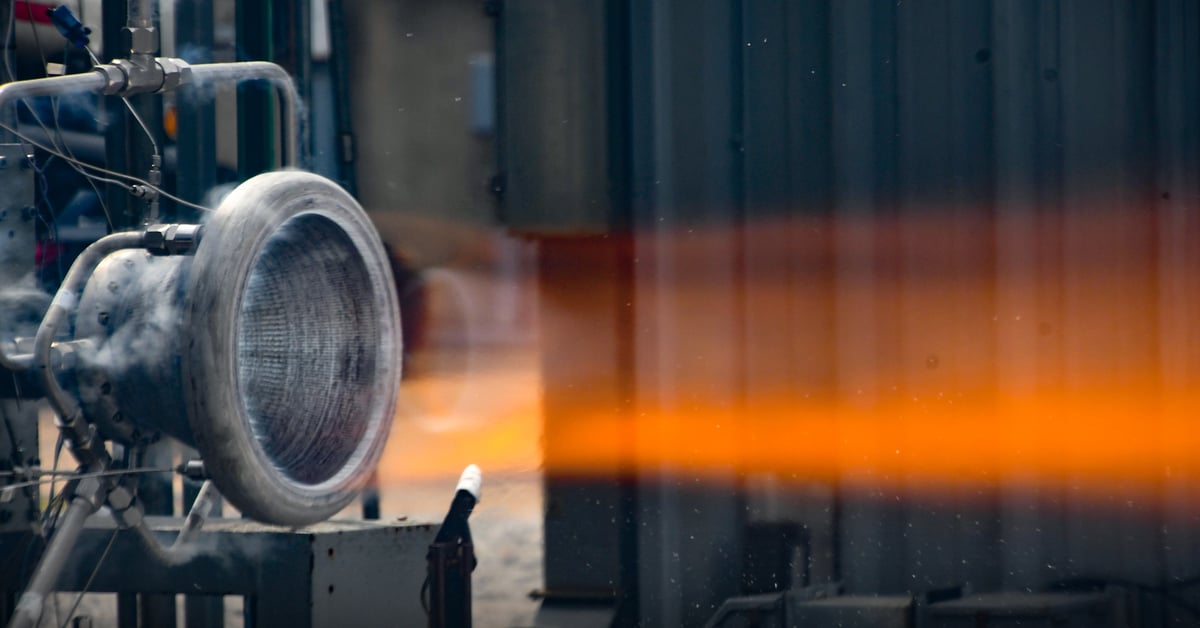
NASA’s Moon to Mars objectives require the capability to send more cargo to deep space destinations. This novel aluminum alloy could play an instrumental role in this by enabling the manufacturing of lightweight rocket components capable of withstanding high structural loads.
3D printed aluminum parts just landed on the Moon as part of the Japan Aerospace Exploration Agency (JAXA)’s Smart Lander. The shock absorber structures found on the tip of each lander leg were designed to deform on impact with the surface to soften the landing, yet needed to be super lightweight for the travel.
A more down-to-earth example of 3D printed aluminum’s strength can be seen in the “world’s fastest bike”, which was 3D printed in Scalmalloy, a high-performance scandium, aluminum, and magnesium alloy developed by material maker APWorks specifically for additive manufacturing. This ultra-lightweight 3D printed bike frame (3D printed on a large format EOS M400 machine) contributed to Filippo Ganna’s record-breaking speed (56,8 k/h) at the 2022 Hour Record in Switzerland.

Also turning to 3D printed aluminum, Airbus Helicopters announced new plans to expand its additive manufacturing capabilities by establishing a new 3D printing centre in Donauwörth, Germany, that will house more machines by Trumpf, in addition to the ones already used by Airbus Helicopters to produce structural components made of high-strength aluminum and titanium.
Airbus Helicopters will initially use the new facility to produce components for the electric-powered CityAirbus concept and an experimental high-speed Racer helicopter, as well parts for the Airbus A350 and A320 passenger aircraft, among others.
Manufacturers large and small are turning to 3D printed aluminum, so let’s take a look at how printer makers and material manufacturers are working together to drive new applications for 3D printed aluminum.
Advantages of 3D Printing Aluminum

Aluminum alloys feature good chemical resistance, are very lightweight, and feature one of the best strength-to-weight ratios of any metal. It’s the choice of many in the aerospace and automotive industry for its ability to withstand harsh conditions.
There are numerous reasons aluminum is an ideal materail for a wide range of applications, but couple it with the unique benefits that 3D printing can deliver, and it’s an even better choice.
One of the biggest advantages of 3D printing in aluminum, or any metal for that matter, is that you can create parts with internal channels and features that aren’t possible to manufacture any other way. You also can print a multi-part assembly as one unit, drastically cutting down on manufacturing and assembly time, and developing a more efficient part overall.
3D printing also does not create much waste. When you’re working with expensive raw materials, anything you can do to minimize waste is a big plus. This is particularly interesting for the aerospace industry, which constantly strives to improve its “buy-to-fly” ratio, the weight of purchased raw material compared to final part weight. This ratio is crucial for assessing the efficiency of manufacturing processes, as a higher ratio indicates more material waste during production.

Casting or machining aluminum often has higher production costs (especially for low volumes) and uses more energy during fabrication. There’s also the additional cost of first producing tooling or molding for the traditional processes.
In addition to these advantages, 3D printing aluminum is also the economical choice when you need just one spare part or a low volume of products. Additive manufacturers can produce low-volume and custom parts quickly and affordably and emerging technology continues to make both larger production runs and lower operational costs a reality.
Who's 3D Printing With Aluminum Today
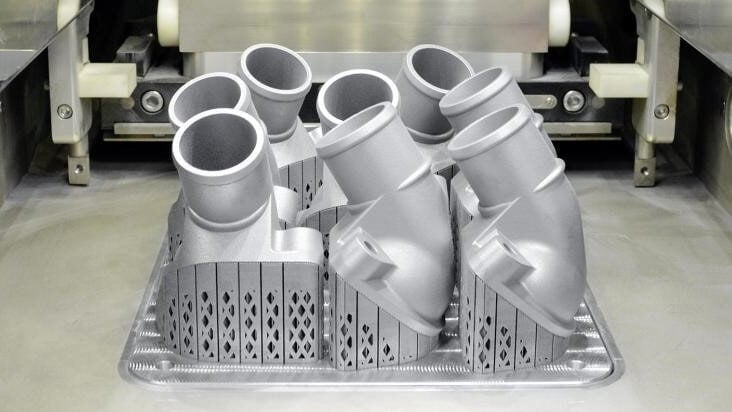
In addition to large companies that own their own aluminum 3D printers, such as Airbus, there’s a growing number of 3D printing services around the world making aluminum 3D printing accessible to anyone.
Automotive

Porsche 3D printed high-performance aluminum pistons for its 911 flagship model, the GT2 RS, that resulted in up to 30 PS more power from the 700 PS biturbo engine, while at the same time improving efficiency. The 3D printing allows the pistons to be manufactured with a structure that is optimized for the loads acting on the pistons. As a result, the aluminum pistons from the advanced development project weigh ten percent less than the forged series production pistons. They also have an integrated and closed cooling duct in the piston crown that could not have been produced by conventional methods.
“Thanks to the new, lighter pistons, we can increase the engine speed, lower the temperature load on the pistons and optimize combustion,” explains Frank Ickinger from the advance drive development department at Porsche.
Porsche also produced its first complete housing for an electric drive using 3D printed aluminum in 2020. The engine-gearbox unit produced using the additive laser fusion process passed all the quality and stress tests without any problems, the company said.
Mercedes-Benz is printing aluminum replacement parts for its line of trucks and cars and improving upon them. In one instance, the inside mirror base of the 300 SL Coupé, the replacement part has been re-engineered with a functional change in terms of road safety that offers an optimized view to the rear.
3D aluminum printing is also growing in popularity for aftermarket parts. Auto restorers worldwide are using 3D printed aluminum when OEM parts are unavailable.

Aerospace
Although lighter-weight titanium is often the metal of choice for aerospace, aluminum is still the workhorse in many applications and new alloys are edging out titanium as a more cost-effective solution. Airbus is using modern aluminum alloys it developed specifically for additive manufacturing for 3D printed parts in its A350 XWB and other aircraft. It’s also using aluminum 3D printed parts in its communication satellites – which feature more than 500 additively manufactured parts.
In addition to the recent collaboration with AML3D, Boeing is using 3D printed custom aluminum parts for its aircraft, satellites, and helicopters. 3D printing using aluminum alloys coated with specially-selected nanoparticles during the cooling phase is creating high-strength aluminum alloys that can be welded without hot-cracking. This breakthrough technology may lead to lighter frames and allow aircraft to travel farther with less fuel.
Helicopter maker Leonardo contracted for aluminum flight parts from Aidro, a company that makes hydraulic and fluid power systems through metal additive manufacturing. Leonardo is looking to 3D printed aluminum for lightweighting and its ability to produce more compact and complex flight components.
This signifies a trend in the aerospace industry to expand from more established specialty materials like titanium to include cheaper powder alternatives like aluminum as the process matures and new technologies enter the market.
How to 3D Print Aluminum
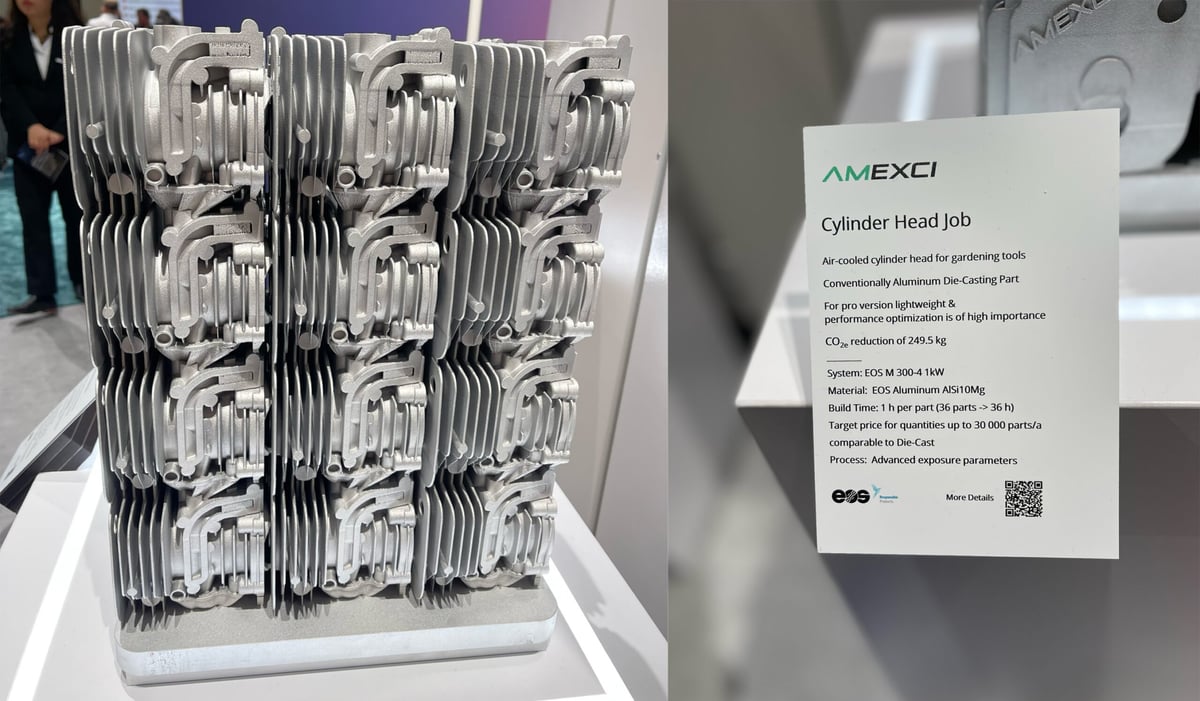
Nearly every metal 3D printing technology can process aluminum, with the differences among them being speed, size, level of detail, and the type and cost of the feedstock. Below are six technologies, but there are some lesser-used others we detail below.
- Fused deposition modeling (FDM)
- Laser powder bed fusion (LPBF)
- Electron beam melting (EBM)
- Binder Jetting
- Cold Fusion
- Wire arc additive manufacturing (WAAM)
For FDM, only two companies currently offer an aluminum metal filament (The Virtual Foundry and Zetamix). This method requires post-processing steps to achieve a more than 90% metal part. It’s the cheapest way to get an aluminum part since aluminum filament will work on most desktop FDM printers, but these are most commonly used for decorative and prototype metal parts rather than functional ones.

LPBF is the most common aluminum 3D printing technology, but not every printer with this technology can handle aluminum. Based on the properties of the aluminum-based alloy to be processed, the LPBF printing parameters must be optimized and tuned to control porosity, microstructure, and final material properties. This is why you’ll see specific relationships between material makers and printer makers.
Top Aluminum LPBF 3D Printers
- EOS
- Concept Laser
- Velo3D
- SLM Solutions
- 3D Systems
- Trumpf
- OneClickMetal
Electron Beam Melting (EBM)
EBM is a similar process to LPBF, but uses an electron beam instead of a laser. The high process temperature of the electron beam results in slower cooling of the single layers and, therefore, coarser microstructure compared to LPBF. Pure aluminum is not compatible with EBM, but titanium-aluminum alloys are.
Top Aluminum Alloy EBM 3D Printers
- QBEAM Aero350
Cold Spray & Wire Arc Additive Manufacturing (WAAM)
Cold spray and WAAM technologies are used to quickly create net-shape large aluminum parts that are then often machined to finer tolerances. This method is far more economical than casting for single, unique parts used in heavy industry.
Top Aluminum Cold Spray 3D Printers
- Spee3D
- Impact Innovations
Top Aluminum WAAM 3D Printers
- ALM3D
- MX3D
- Gefertec
- WAAM3D
Binder Jetting
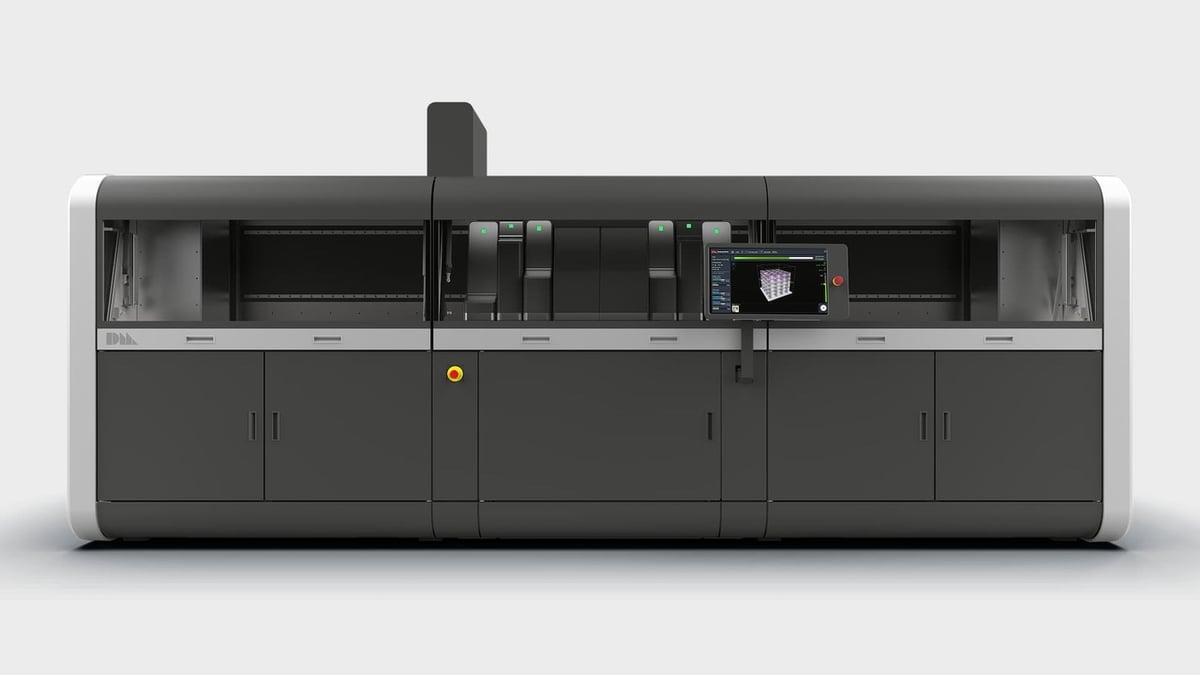
Binder jetting for aluminum is the technology option for fast printing of medium to large volumes of parts. This technology requires post-processing. There are three major manufacturers making metal binder jetting 3D printers, but only one prints with aluminum, Desktop Metal.
Top Aluminum Binder Jet 3D Printers
- Desktop Metal’s X-Series & Production System
Specialty Aluminum Technologies
One specialty technology involves extruding molten aluminum. Called molten direct energy deposition (molten DED) or liquid metal jetting, among other terms, this technology differs from metal extrusion 3D printing in that the extrusion versions use a metal feedstock with a bit of polymer inside to make the metal extrudable. The polymer is then removed in the heat treatment stage.
Molten DED, on the other hand, uses a pure metal. It’s available from 3D machine makers Grob, Valcun, and ADDiTec. Xerox had offered the technology on its ElemX 3D printer, which is currently installed at select US military installations, but sold it to ADDiTec. The benefit of this approach is that there’s no hazardous metal powder to work with and the finished prints do not require any post-processing.
Another specialty technology for aluminum at production volumes is in development from start-up called Alloy Enterprises. The company uses a type of sheet lamination 3D printing process that uses as its feedstock sheets of aluminum. It’s not clear whether Alloy Enterprises will offer their technology as a machine or a service.

In a category of its own, yet similar to molten DED, one company called Meld uses friction energy deposition (also called friction stir energy deposition). FED is a solid-state process, meaning the material does not reach the melting temperature during printing so it produces parts with low residual stresses and full density, the company says, using significantly lower energy than more conventional fusion-based processes. FED is also a single-step process that does not require sintering or post processing. The process has potential for quick metal manufacturing without hazardous metal powders or heat.
Know Your Aluminum Materials
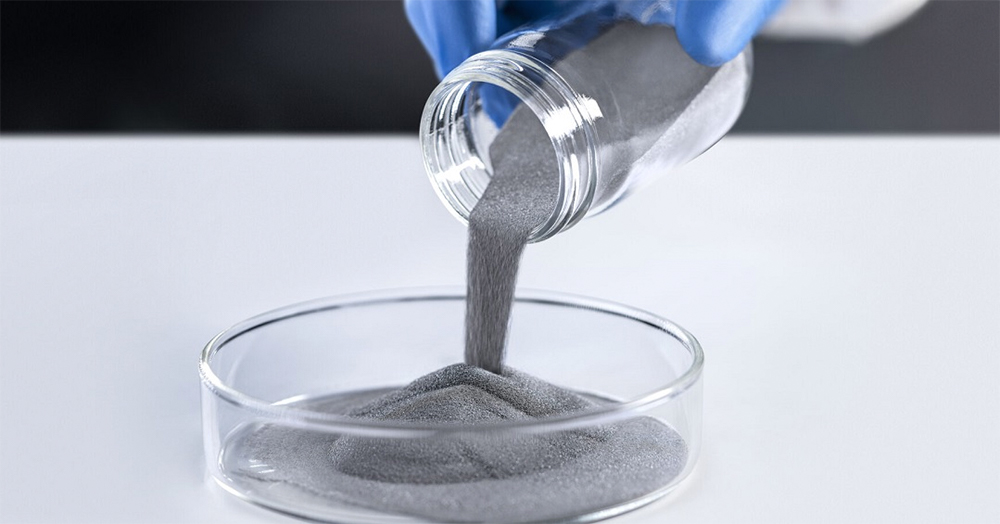
There has been considerable R&D effort in aluminum alloys for additive manufacturing recently. In the early days of AM, engineers had challenges working with aluminum, but things have changed. New high-performance aluminums and alloys have been crafted specifically for 3D printing processes that exhibit the traditional characteristics that manufacturers today require. These materials are particularly tuned to take advantage of the unique melting processes of laser and electron beam additive manufacturing.
Some new start-ups have arrived with proprietary atomization techniques to produce high-performance aluminum alloy powder specifically for 3D printing. The list of “printable” metal materials has doubled in the last three years, dramatically expanding the number of possible applications where users can leverage additive manufacturing.

Special Aluminums for 3D Printing
- UniFuse AlSi10Mg, launched in February 2023 by Uniformity Labs, is an aluminum powder for laser powder bed fusion 3D printing at 50- to 90-micron layer thicknesses. Currently in production under the product brands UniFuse and UniJet (the version for binder jetting), Uniformity Labs says the powders will improve repeatedly at scale.
- NExP-1, launched in late 2022, by materials company Equispheres, is a non-explosible aluminum alloy feedstock for additive manufacturing that reduces the hazards associated with the day-to-day handling of materials for 3D printing. Equispheres also says its Performance AlSi10Mg powder designed for additive manufacturing, was able to reduce printing time by more than 60% when printing a complex equipment component on an Aconity3D laser powder bed fusion 3D printer.
- Scalmalloy, developed by additive manufacturing company APWorks specifically for 3D printing, is the highest strength AM processable aluminum alloy, the company says. It’s used in aerospace and motorsports to stand in for high-strength 7000 series aluminum.
- A20X aluminum powder was explicitly developed for additive manufacturing by Aluminium Materials Technologies, now a part of Eckart Group. The company says this special alloy designed for aerospace applications can produce significantly lighter components than conventional aluminums.
- Elementum 3D offers gas-atomized aluminum alloy additive manufacturing feedstock powders, including enhanced versions of traditional aluminum alloys and advanced dispersion-strengthened aluminum powders enabled by the company’s proprietary Reactive Additive Manufacturing (RAM) process. The RAM process makes previously un-weldable and, therefore, unprintable aluminum alloys available for metal 3D printing as feedstock powders.
- EOS Aluminium Al2139 AM is a proprietary aluminum alloy from printer and material maker EOS engineered specifically for additive manufacturing to offer performance in elevated temperatures up to 200ºC. Launched in 2021, the alloy is designed to give EOS customers an opportunity to significantly reduce the weight of manufactured parts without compromising strength (tensile strength around 500 MPa when heat treated).
- Aheadd is a collection of two aluminum powders from material company Constellium optimized for the laser powder bed fusion processes. Aheadd CP1 offers many benefits, including thermal and electrical conductivity approaching that of pure aluminum, high ductility and excellent surface finishing characteristics. This alloy is also a cost-effective alternative for other AM applications due to its very high printing speed and simplified post-processing, which make Aheadd CP1 the solution of choice both for rapid prototyping and series production.
- S220 AM is a new aluminum alloy for laser powder bed fusion launched in 2022 by Swedish company Granges Powder Metallurgy. S220 aluminum alloy offers high silicon content, low density, and a low coefficient of thermal expansion. Currently only available as a service.
- CustAlloy aluminum from Kymera’s ECKA Granules is specifically designed for laser powder bed fusion and is particularly beneficial in automotive applications, the company says, because it does not break or crack as quickly as traditional aluminum, making crash-relevant applications possible. This patented Al-Si-Mg-based alloy is heat treatable to offer high strength or exceptional ductility, depending on the final application.

Standard Manufacturing Aluminums
Many of the current aluminum alloys for 3D printing are simple casting alloys, such as AlSi10Mg. These aluminum alloys are not particularly strong, nor can they manage high temperatures. Still, their mechanical properties are suitable for a wide range of applications and the material is “weldable” and, therefore, can be used in 3D printing without cracking. The properties of these materials may be all some companies are looking for in metal 3D printing, but others, especially aerospace and advanced manufacturing, need more.
While there are several different types of aluminum alloys on the market, here are some of the more common ones being used in AM.
AISi10Mg is the most common aluminum alloy and features solid strength, hardness, and dynamic properties. Its light weight also supports good thermal properties and has strong buildability for use in challenging geometries. Uses include housings, ductwork, engine parts, and production tools.
AlSi7Mg0 combines aluminum, silicon, and a small amount of magnesium to create a highly durable and lightweight allow suitable for fine objects and complex geometries. It’s used in applications that require a strength/mass ratio as well as good thermal properties.
Al 6061 & Al 7075. 3D manufacturers are starting to have success with printing using 6061 and 7075, which were previously thought not to be conducive to the AM process. Merging nanoparticles is showing progress.
Alloys in the 6000 series have properties that make them one of the most popular traditional manufacturing of electrical or electronic parts. They are ductile with high thermal conductivity, electrical conductivity, and corrosion-resistant. 6061 is a precipitation-hardened aluminum allow, containing magnesium and silicon.
7000 series alloy powders have a high zinc content, are known for excellent mechanical properties for higher strength and are heat treatable. 7075 is most commonly used in highly-stressed structural parts, such as aircraft parts, and is stronger than many standard structural steels.
Order Aluminum Parts
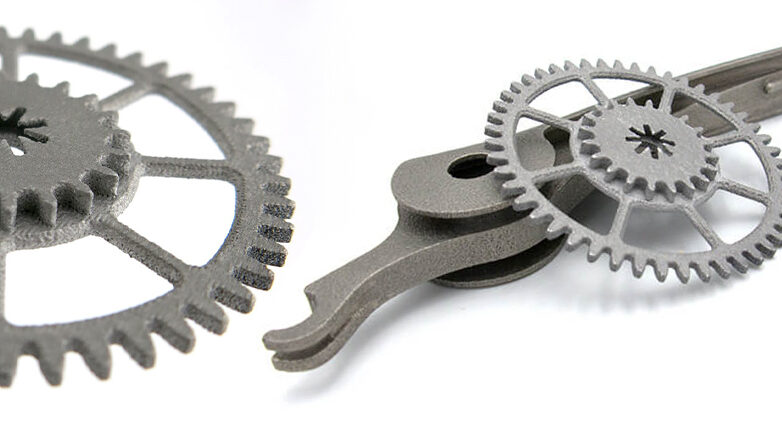
Investing in a metal 3D printer is no small decision, and part of any good due diligence is ordering sample parts. You can order these from the manufacturer, but many printer manufacturers on this list also offer print-on-demand services. For smaller projects, one-offs, and tests, outsourcing your 3D prints to a metal 3D printing service can dramatically save on the capital cost and overhead of operating your own system.
There’s a growing number of contract manufacturers with fleets of metal 3D printers ready to custom print your part whether it’s a prototype, a final functional part, a unique spare part, or a work of art. With dozens of potential service providers to chose from, you can spend weeks tracking down the best price and delivery options. Fortunately, there are a few marketplaces of 3D print services, such as Craftcloud, where you simply upload your 3D model and receive multiple quotes from suppliers from which you choose the best fit.
Lead image source: Clockwise: 3D Systems designed by nTopology, Constellium Powders, One Click Metal, dog by Cole Mathisen with Mass Finishing Inc., EOS.
License: The text of "3D Printing Aluminum – The Ultimate Guide" by All3DP Pro is licensed under a Creative Commons Attribution 4.0 International License.






